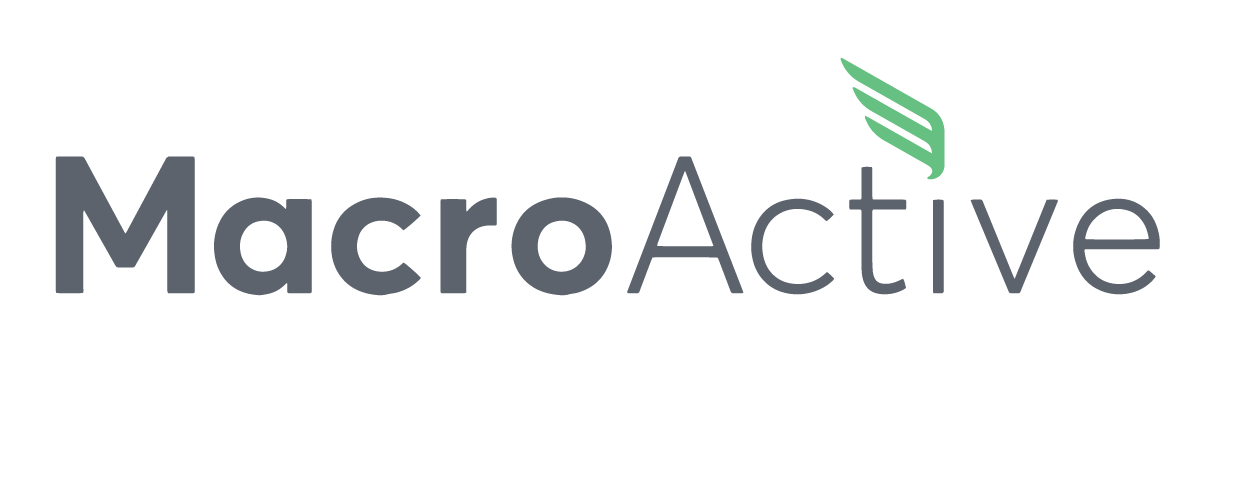The MacroActive Backstory
Scaling Impact Chapter 1 - from the perspective of our CEO, Ken Brickley
The showroom floor vibrated beneath my feet, forming ripples in my coffee. My heart pounded as I swept my credit card. The smells of expensive leather, rubber exhaust and espresso collected in my nose. The deposit on this vehicle cost more than my entire car was worth. I had ogled over supercars and showrooms as a boy. But here in this moment, I experienced an intense mix of emotions brought on by this special work of art. The credit card went through - approved - and the salesman shook my hand to offer his congratulations on the new Lamborghini. What I knew and he didn’t was this car, unfortunately for me, was not about to be mine. On this day, I was there as a favour on behalf of a client to take the rare lamb off the market.
A client who had for the previous 12 months, implemented with Lamborghini precision, the strategies and tactics you're about to learn. He took this company from the brink of death to delivering world class impact and profitability. This supercar, the Lamborghini Huracan was his deserving birthday treat to himself for a dramatic company turnaround. As I was leaving the dealership that day, I was overcome with an epiphany. This strategy, this playbook I had developed, worked. If in one year we could swing around an operation by this much. I knew we were on to something. The clients name is Josef Rakich. We first met five years earlier in an office above a sports bar in Takapuna New Zealand. My mate John and I both worked at a digital media development company.
A Russian assistant, Anastasia had just delivered Josef and his friend glasses of water and she was holding back an excited smile as she left the room and I entered. It was hot as hell that day with no air conditioning, but that didn't bother Josef. He barely had any clothes on. Sporting a bodybuilding singlet and shorts he was showing off an exceptional display of weightlifting dedication. I'm not kidding, his arms were the size of cannons, I mean, actually larger than my thighs. And his sidekick Brett was a taller, more slender version, both of them 19-20 years old, extremely well built and clearly serious about exercise and nutrition. At the time, Josef owned the third largest Facebook page in New Zealand behind, Jamie's World and the All Blacks national rugby team.
Sitting around the poker table, Josef and Brett began to explain their problem. Josefs Facebook page had grown in popularity and engagement, so much so that they couldn't keep up with the flood of requests coming in from fans. His fans were messaging constantly, all with the common theme. They were asking Josef to write a custom meal plan and training programme to help them get into similar shape. The good news was he was getting paid for each custom plan and he'd already made almost $100,000 telling people what foods and how much of each food they should eat. For each customer, he would write out how many grammes of protein, fat and carbs they should be eating over the course of a day. And then he would assemble recipes and meals, which would add up to the correct amount of calories and macronutrients. The bad news was that it was very time intensive. He found himself so busy calculating and recalculating meal plans that he no longer had time for his true passion, lifting weights at the gym. In his words, he was beginning to feel like a hostage to his new business. There had to be a better solution.
Josef needed a way to automate all the manual labour of writing his customised meal plans and customised training programmes. But it was a little more complicated than that. The automation still needed to take into account the individual needs of each client such as allergies, diet preferences, or any potential injuries. The free time Josef would save by automating all the manual parts of his business would allow him to create more content for Facebook, YouTube, and this new social platform that had just been purchased by Facebook, Instagram. Josef had an acute understanding of the link between his volume of valuable content and the growth of his social audience. But he desperately needed his time back. The tagline for the business where we worked at the time was 'Online Revenue Experts'. We had a small team of software engineers and online marketing geeks, who all shared a passion for building web applications and turning visitors into customers, a way different crowd of people than the bodybuilding scene.
But thankfully, my longtime friend, and later business partner, John Franich, worked at the business with me. I'll never forget John's reaction the day we all met, he could hardly contain himself in that first meeting, you could see him shifting in his chair with anticipation as Josef described the problem. You see, John was also an athlete and had years of experience following strict meal plans in his training for Ironman races. As Josef was elaborating on the problem, John was busy sketching out an algorithm for how this could be solved. This meeting was the genesis of what would become Josef Rakich Fitness, and later, MacroActive. Over the next few years, John and his team of software engineers built a software programme that not only solved Josef's initial problem, but empowered hundreds of others like him to grow and scale their business. The guy's set up a small office in Josef's garage, handling customer service and editing his content. With Josef promoting his new service in each post, the sales came in fast and furious.
These were the days of 60% organic reach of your followers on Facebook. John joined the boys every evening after work, organising their finances, and defining new features for the core software. During this time, I left to run another startup in the ad tech space. And John joined on with Josef Rakich fitness full time as their General Manager. The business flourished, the staff grew. They moved into a proper office and Josef went to town investing the profits! Several houses, wild sports cars, okay, that wasn't a good investment. But the farm? Yes! He bought a whole farm, turned out to be an extraordinary investment. Business was good. As the business grew, so too did the number of competitors offering similar services. It became clear to John after conversations with people in the industry, everyone offering these services were struggling with the same original problem that Josef faced. To offer a superior service, you needed to provide time intensive, extreme customization to each customer's meal plan. A core shared value among everyone on the team was helping people become healthier and happier versions of themselves. What if they could really scale by partnering with the competition to reach a much larger audience? This was the question John began to ask over and over, until..
After many versions of the software and millions of dollars later, the boys decided to invest even more, and create a new business. MacroActive, which John would build. The thesis for this business was a proper software platform that would support not only the growth of Josef Rakich fitness, but the growth of an entire industry. The objective was to scale impact one trainer at a time. They tested it to see if it would work. And just as they brought their first few clients to market, Facebook would deliver Josef Rakich Fitness, the breadwinner, an unexpected algorithm slap that no one saw coming. Josef's audience and subsequent source of income was largely concentrated inside the single platform of Facebook. Almost overnight, the bottom fell out of his business. For seven consecutive months revenue declined and the losses accelerated. And during all of this, the business seemed to be doing everything right. The content was the same, advertisements were the same yet still all the traditional marketing tactics that had worked over the previous years, were very quickly becoming less and less effective. it was not fun for anyone. Tensions were high.
As early as I can remember, I always paid attention to what drove people to spend money and buy things. My parents tell stories of me proposing a loan scheme to my mother, complete with interest, so that I could borrow and purchase cheap trays of candies from Kmart. To then resell them one at a time in the halls of my school at enormous markups, undercutting the school cafeteria by 50%. If the discount was deep enough, I found I could change people's product preference. Later at university, I learned the marketing power of placement. what I like to refer to as fishing where the fish are. My mentor was a great man, Mr. Bliss, who owned an industrial boiler rental company. He had only ever done business in North America and advertised exclusively via the Yellow Pages, way before Google in the dial up days of the internet. I convinced him there may be customers abroad who could be in need of and searching for his services online.
I built a website for him and began placing advertisements on Yahoo. And then the phone call came from a very desperate power plants site manager who found us on Yahoo. They were weeks away from going live on the construction of a new power generation plant and their steam boiler had exploded accidentally during testing. Their problem? They had a million dollar a day penalty clause for their construction agreement. They needed a replacement rental boiler fast. As it turned out, my first sale online from that Yahoo campaign generated a contract worth more than a million dollars in profit to my mentor. After that deal closed he upgraded his Whites Cadillac and gave me the old one, a beautiful 1985 convertible Eldorado Borowitz. Those were the good days, but my life changed the day I heard the roar of the Antonov aeroplane arrive at Moffett Field, to transport this boiler to its destination in the Philippines. It was and still is the largest aeroplane in the world, the one where the nose lifts up to bring in and out cargo. I knew in that moment, as my insides were vibrating from the noise of the sixth gen engines. This online marketing thing was it for me.
In a moment, I knew that I would spend the rest of my life learning as much as I could about this new way of selling. 25 years of experience later, I built a deep set of skills and produced results online across a wide array of industries, both business and consumer centric. One of my startups was featured in Tim Ferriss, the four hour workweek, and I had the fortune of selling some of my shares and another startup. Despite my moderate success, I was still deeply unfulfilled in a way I couldn't explain. I craved more meaningful work. I was ready for a change when I got the call from John at MacroActive. Joseph Rakich Fitness needs help mate. Even though my pedigree was not from the world of health and fitness, I had a unique connection to consumer behaviour, especially in this weight loss industry. For most of my adult life, I struggled with my weight and what it's like to be obese and how rewarding it feels to shed that baggage. The newfound energy, the focus and clarity of thought, the social and professional opportunities that magically appear as a result. I know how disappointing it feels to put it back on too.
When we looked at the data, a small percentage of people were trying to bulk up and get stronger. While the overwhelming majority were overweight and needing to shed the pounds, something I could strongly relate to. I got stuck into the business looking at everything yet nothing was obviously wrong. It seemed to be more than just a Facebook algorithm change. There was definitely more noise in the market. What was once a blue ocean of opportunity had in fact become bloody and red. However, things still didn't seem to add up, we had millions of followers across social media and by this time across more than just Facebook. We had an Email List hundreds of 1000s strong. Surely we can turn this around.
When I step back, I could see that campaigns and promotions were planned out for months in advance. A lot of preparation would go into each campaign. And so giving each campaign time to run its course, appeared a part of the culture. This certainly, and clearly was not working. So the first change was to adopt a new mentality of relentless experimentation. F*ck it, nothing is sacred became our motto. This was important because it allowed us to take risks, put bullets in anything that wasn't working immediately, and move out of the rut of paralysis by analysis. 12 months later, I was standing in that Lamborghini showroom, holding the keys to Josef's new supercar. After a year of grind, we discovered that our unique technology within MacroActive allowed clients like Josef Rakich Fitness to scale in an unlimited way. But more importantly, it was a playbook of sorts, which allowed our customers to stand up and win at scale, in red oceans of competition with diminishing organic reach from social platforms. It was the automation platform, and the collection of strategies together that provided the magic recipe for scaling impact.
As Josef's business began to pick up momentum again, the before and after pictures came flooding in from customers who had lost serious amounts of weight. John and I were realising that the MacroActive platform, and its clients were having a real impact. If our first MacroActivist (MacroActive client) impacted more lives than the entire population of my hometown in Canada, in a single month, could we think bigger and take on a seriously ambitious goal? We looked at all the industry statistics and learned that every 12 seconds, someone dies from a weight related disease. Wow. This is scary and profound. And in the context and backdrop of COVID, this is a serious, serious problem that should be on the nightly news and isn't. Some of our clients have social followings the size of cities, even nations! If we could affect 100,000 people's lives through a single trainer? How many more lives could we change if we signed up 1000 more trainers? Perhaps 10,000 or 100,000, personal trainers, coaches, instructors, athletes, dancers, kickboxers - could we, one micro or macro influencer at a time, scale our impact on a global stage with a truly audacious goal of curbing the global obesity epidemic?
For the next two years following that symbolic day at the Lamborghini dealership, Josef continued to scale his impact. While John and I built out MacroActive one influencer and one employee and one personal trainer at a time. Clients in every timezone, calls at every hour of the day and night, weekends, holidays, birthdays blurred together. Sneaking out of weddings, family functions, kids recitals, Christmas dinners, funerals, COVID lockdowns to make sure the machine was running smooth and that playbook, that set of strategies was being followed. We are still a long way from where we want to be, less than 1%. But what we have proven over and over even in today's uncertain times, is when a personal trainer or influencer small or large, puts into practice our technology and marketing methodologies. They can earn a very respectable living, helping people improve their lives.
When we work with our elite clients, we focus on the mix and sequencing of strategies we used in the year leading up to Josef's Lamborghini purchase. And in the years following where we reapplied our strategies over and over amidst several algorithm changes, and even a global pandemic. To hundreds of influencers, all struggling to scale their impact. What has become even more interesting is our ability to see what works and what no longer works across a wide breadth of clients in this space. When COVID lockdowns began occurring country by country, we could see the shift in behaviour and rebounds in business from some and not others. We shared what we could see working with those MacroActivists on the inside of our company, and those who implemented quickly began to see results quickly. Among all our MacroActivists worldwide, there is an elite and growing group that we call Macro Millionaires, those who have implemented this technology and our strategies correctly and are truly scaling their impact. Most importantly, these superstars understand the secret importance of abundance thinking and sharing strategy for the greater good of scaling their impact. Our business is dedicated to you.
It is worth mentioning, none of our clients have received the luxurious crutch of venture backed bank accounts to achieve their success. Everything we stand for is built on the fundamental philosophy of getting everything you can out of all you've got. If you are an influencer on social media, small or large, if you were a personal trainer, who once inspired people face to face in the gym, and now are exploring how to reinvent yourself in a new remote world. If you're an athlete stuck at home, longed to be back on the field, yet have 1000s of people that look up to you and are inspired by you. If you want to turn your followers into dollars, then reach out to MacroActive and learn how to apply our ever current tools from the frontlines of this industry.
This is the first chapter of our forthcoming book from the perspective of our CEO, Ken Brickley! Stay tuned for more and enjoy this genuine story of working hard and earning success!







